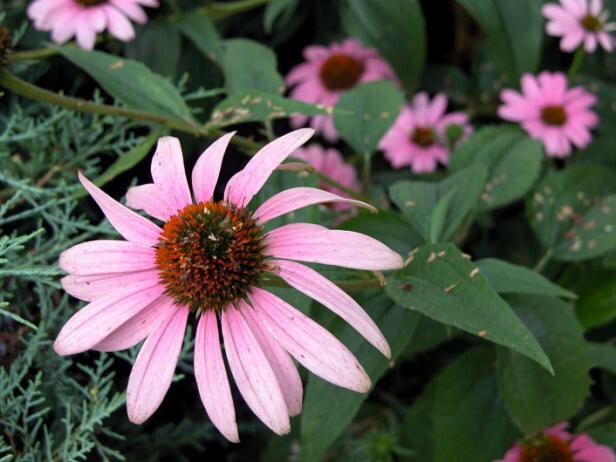
The purple coneflower is an easy-to-grow native plant that blooms in July and August, when many other plants are past their season. This tall perennial (up to four feet) blooms in shades of light purple and white; some cultivars offer bloom colors of orange and yellow. Daisy-like (ray) flowers have golden-orange cones in the center and stand tall over the dark green leaves. Plant size is two to four feet tall and one to two feet wide.
How to use it: In mass, in containers or as a specimen. Use in a mixed perennial border or naturalized planting. Combine with other sun-loving perennials, such as black-eyed Susan (Rudbeckia). Good fresh or dried cutflower.
Culture: Give purple coneflower well-drained soil in a sunny spot, and it will do the rest on its own. In hot weather, a little afternoon shade seems to help prevent the colors from fading. Propagated primarily by division or seed. No major pest or disease problems--occasional leaf spot and Japanese beetle damage.
Special Notes: Valued for its low maintenance and long-blooming flowers. Drought tolerant. Attracts wildlife, including butterflies and birds.
Selected cultivars:
·E. purpurea 'Magnus' has pinkish-purple flowers while 'White Swan' is a white-flowering selection.
·Pale coneflower (E. pallida). Purple flowers are distinctive with their drooping, narrow petals. Plants are generally not long-lived, lasting about two to three years.
·Yellow coneflower (E. paradoxa). Unique yellow flowers in early- to mid-summer.
·Tennessee coneflower (E. tennesseensis). Has slightly-upturned, rosy-purple, narrow petals and shorter, less vigorous growth habit. 'Rocky Top' is a compact cultivar, reaching about two feet tall. USDA Zones 5 to 8.